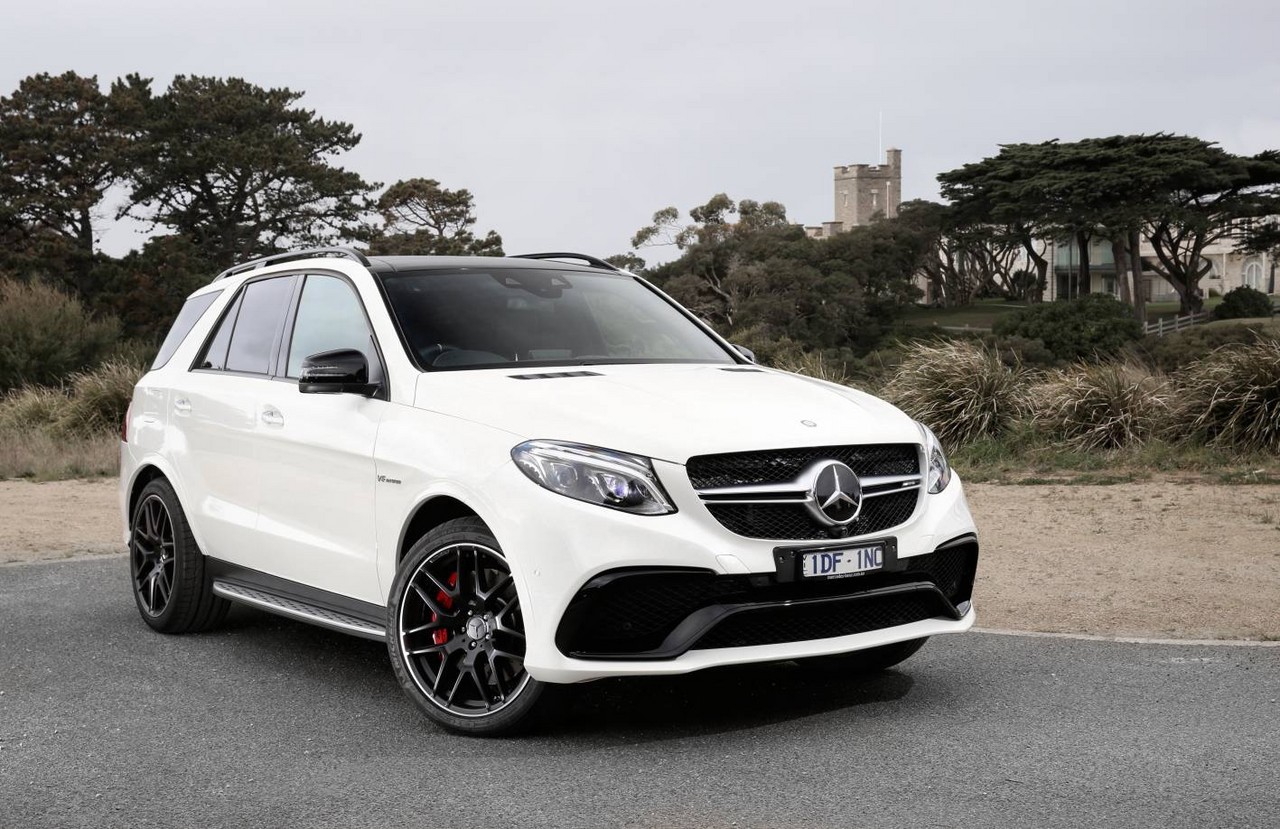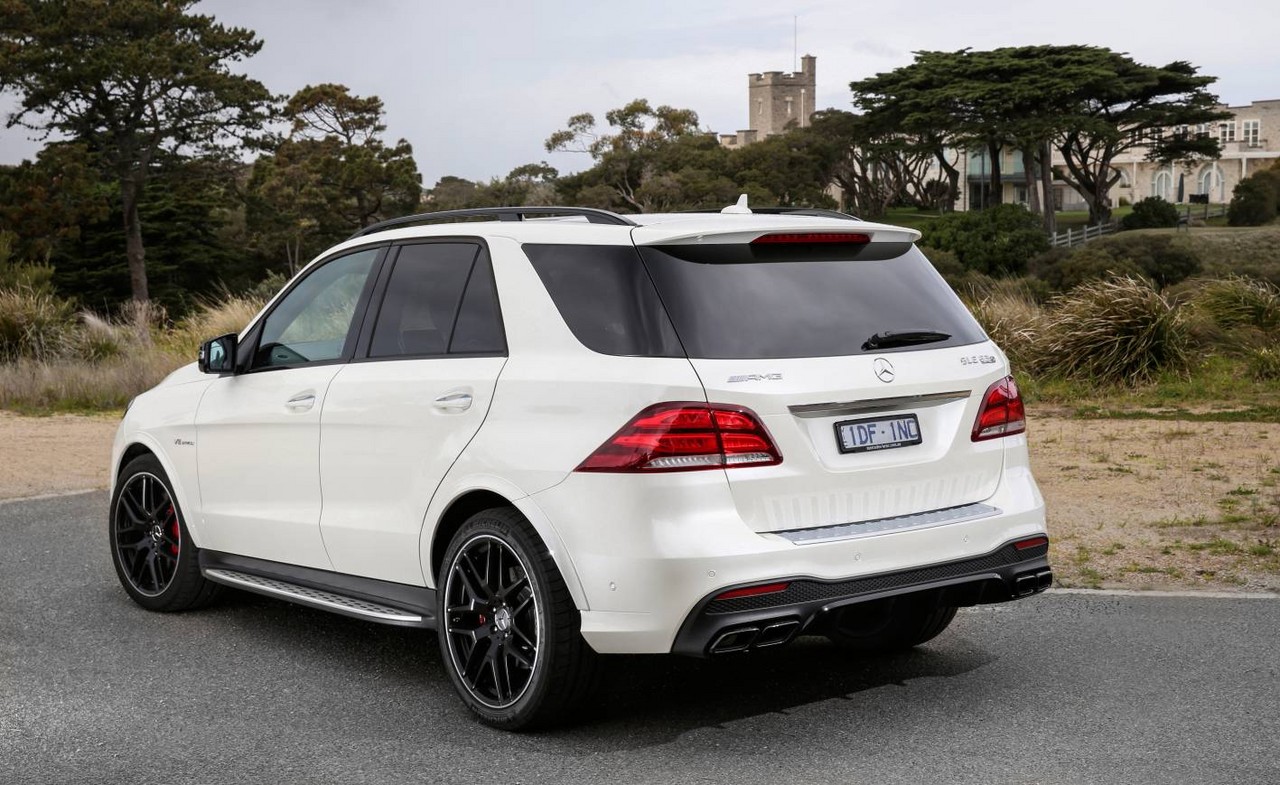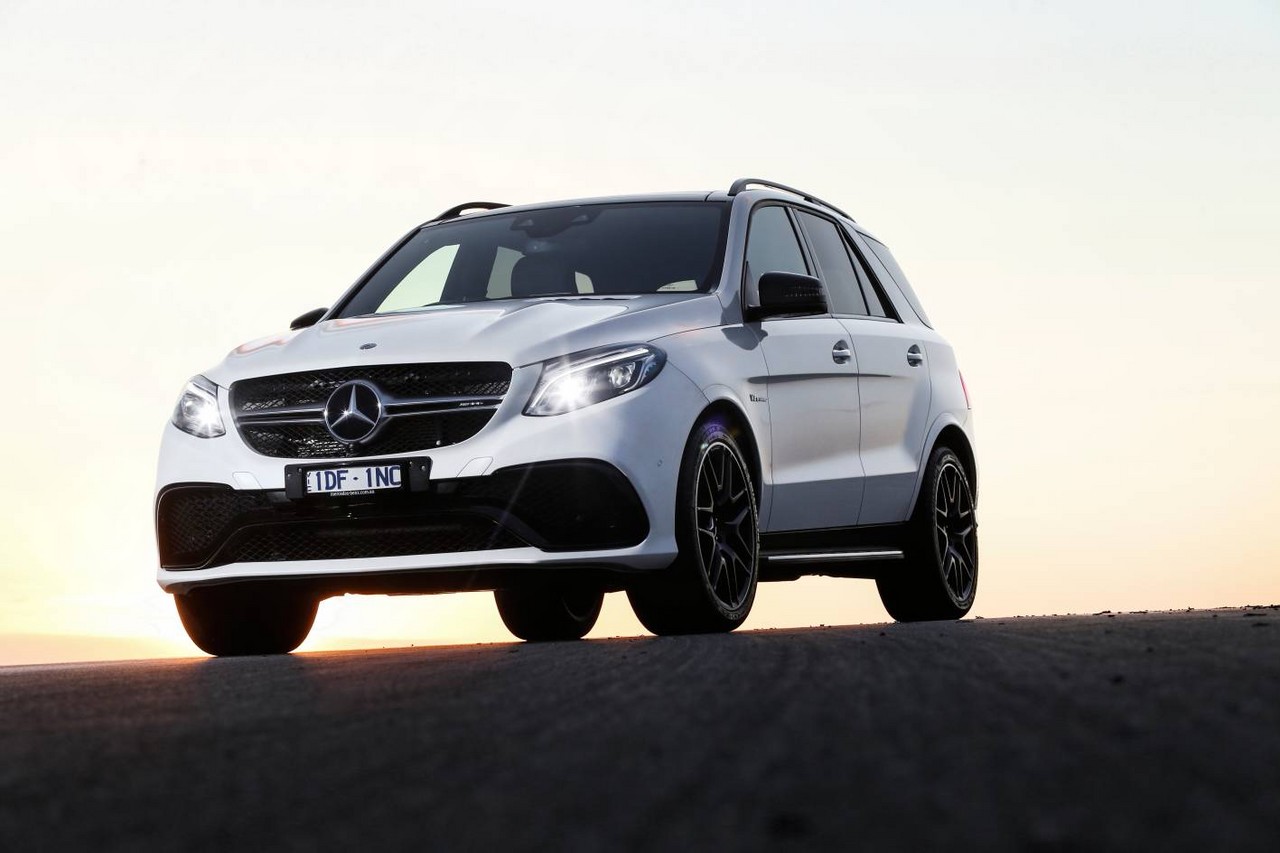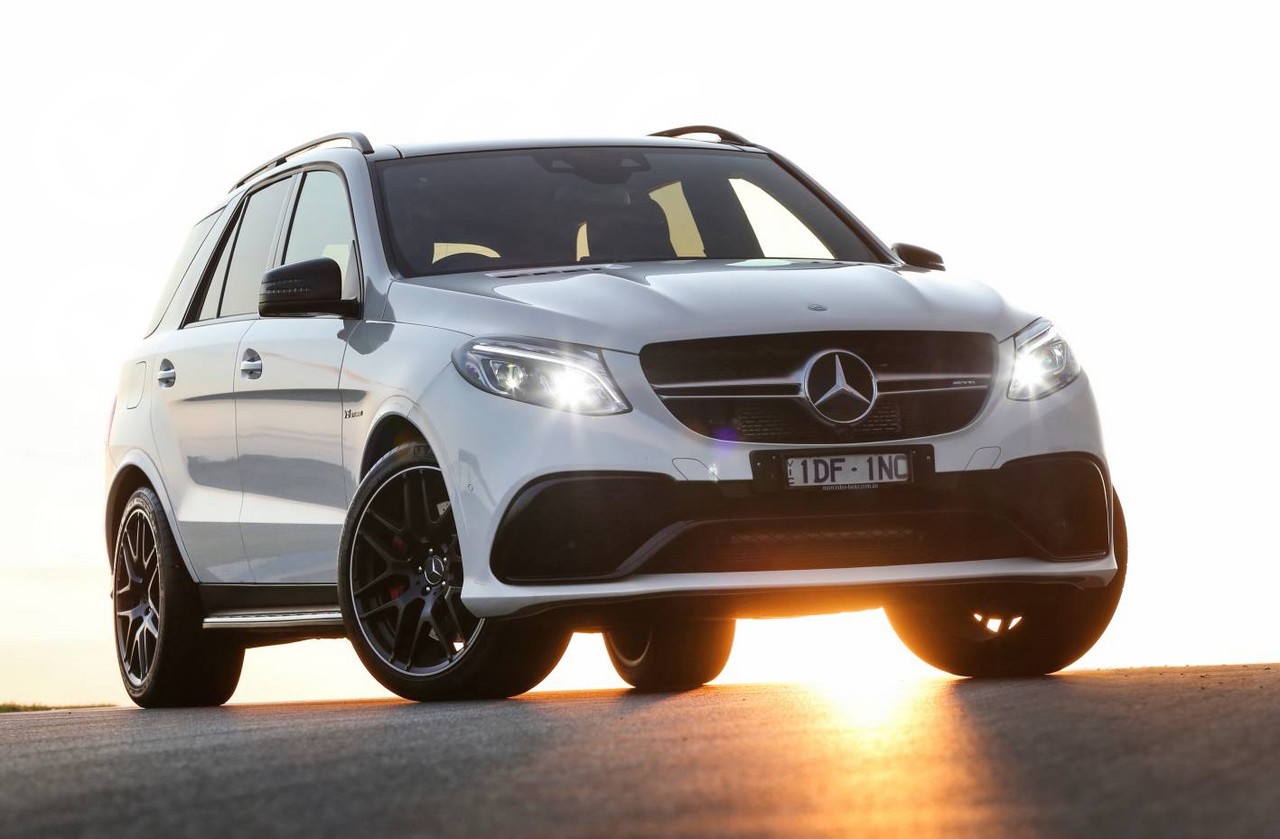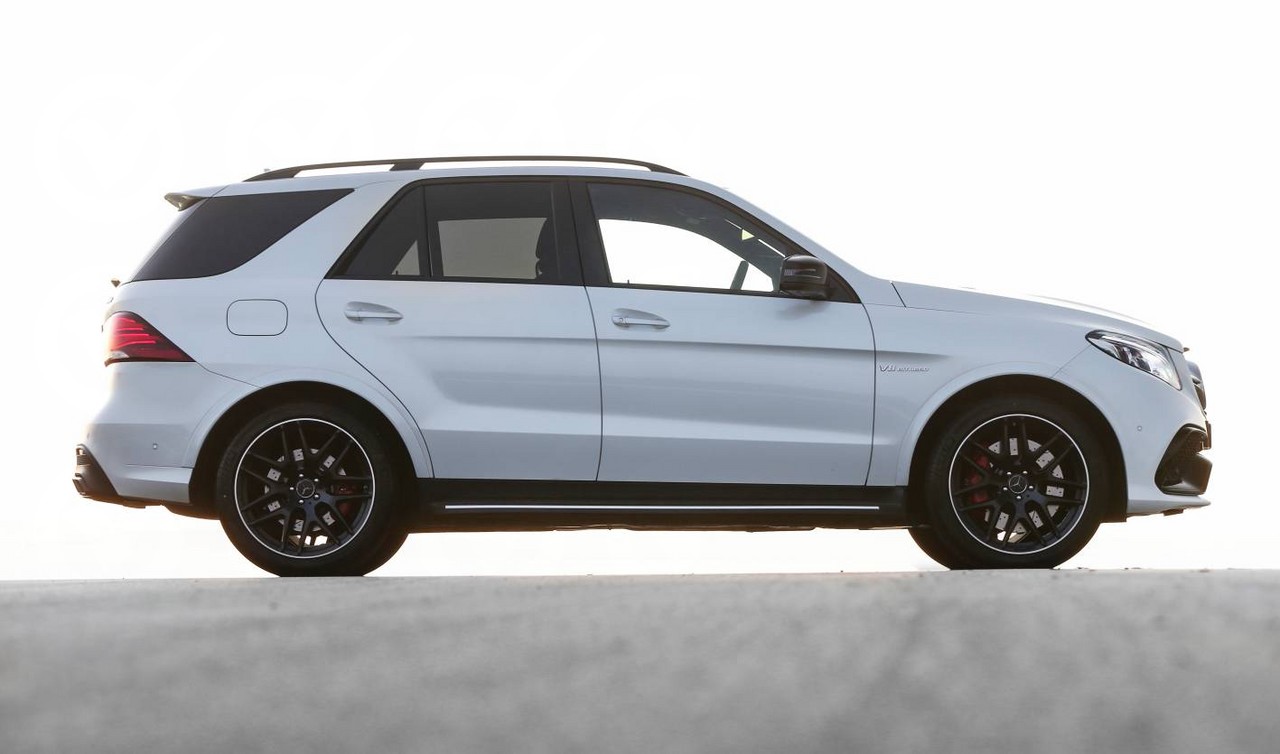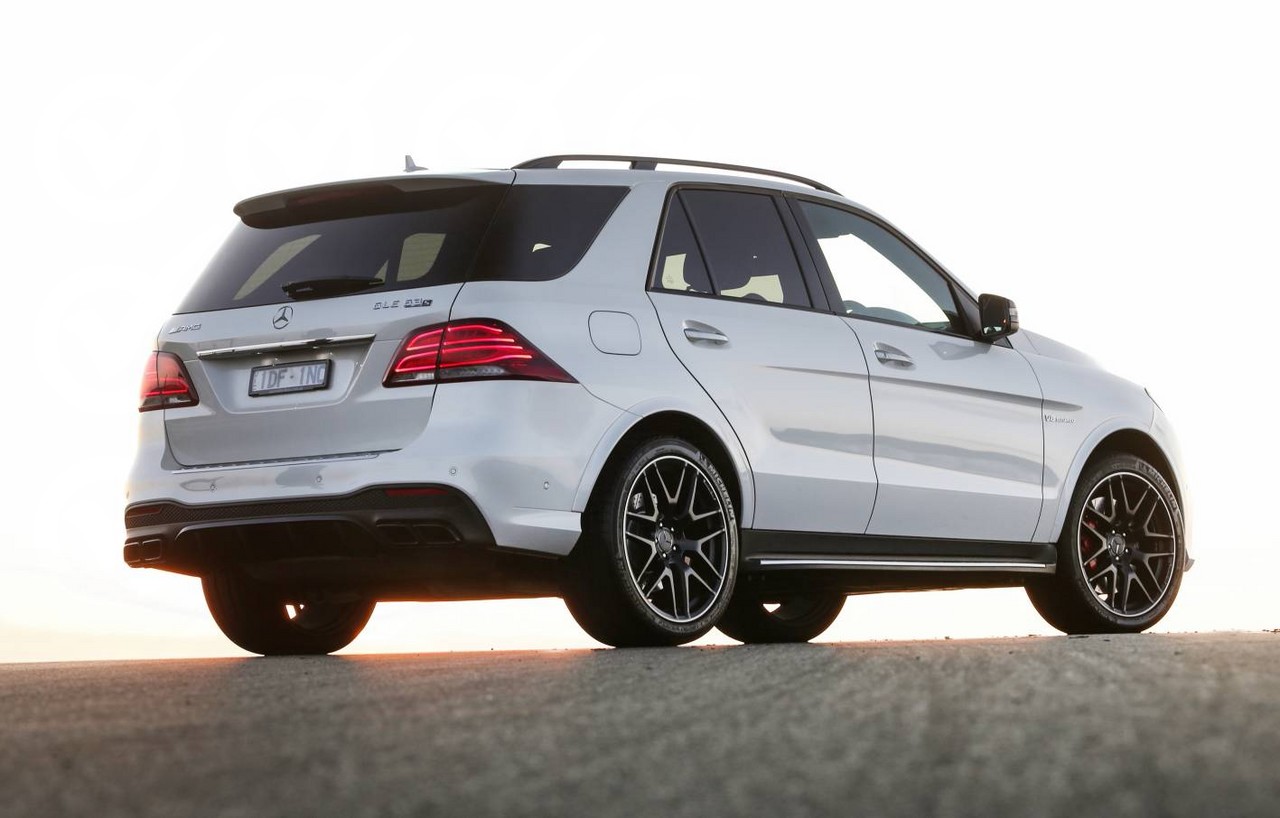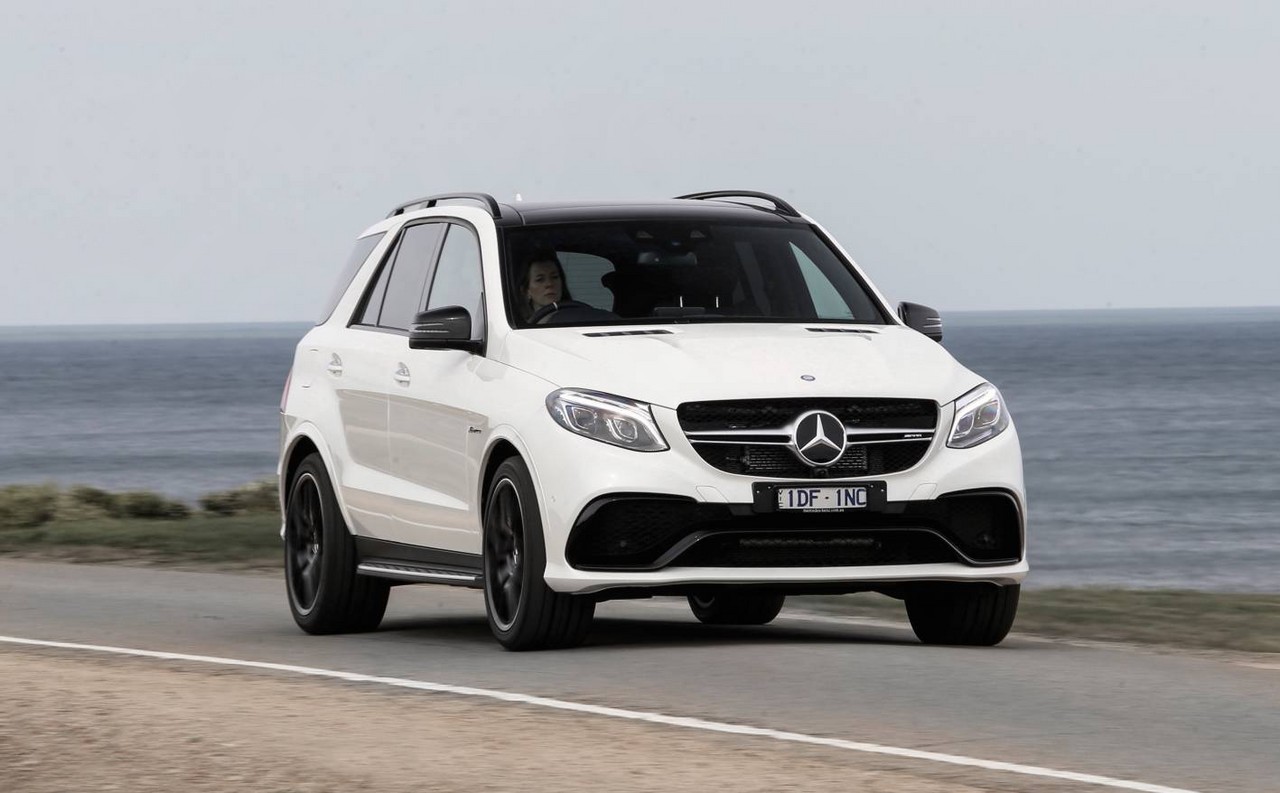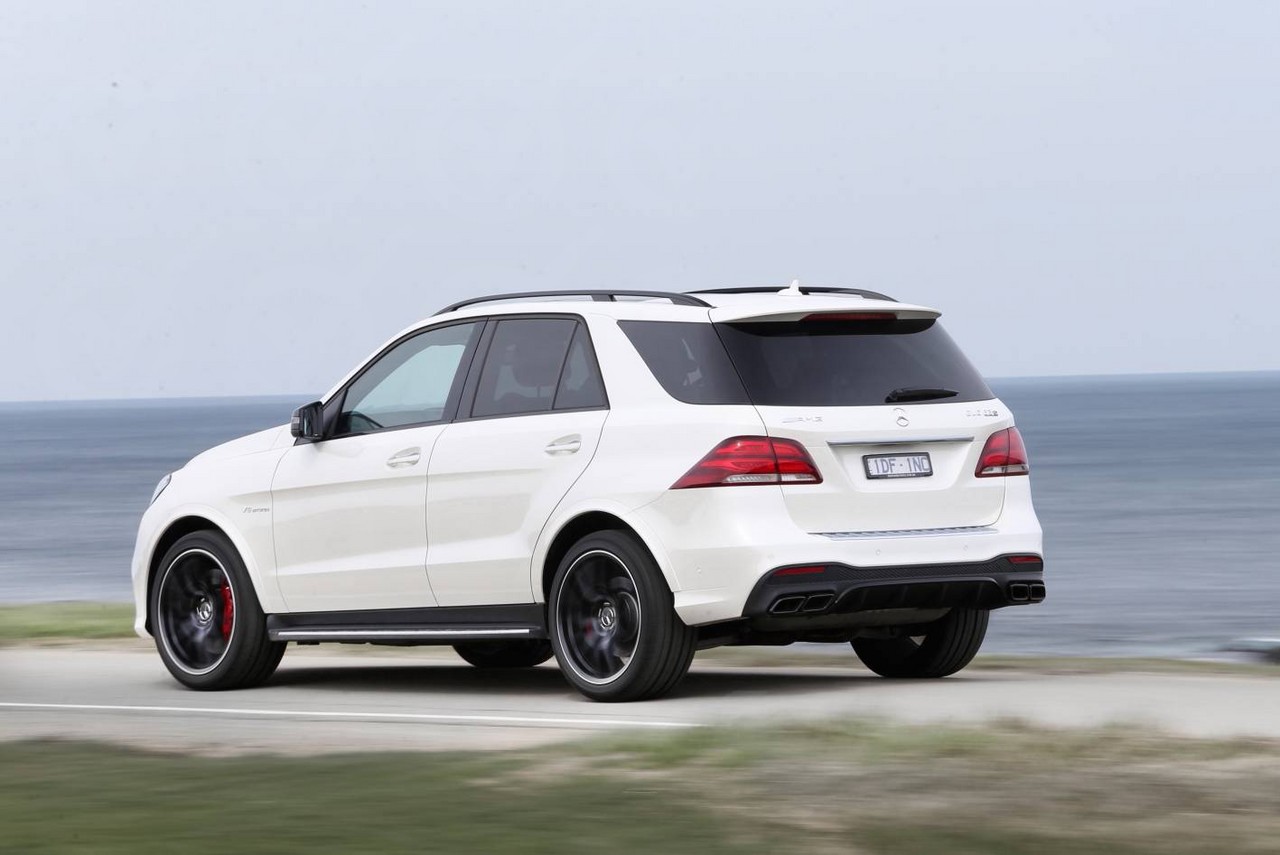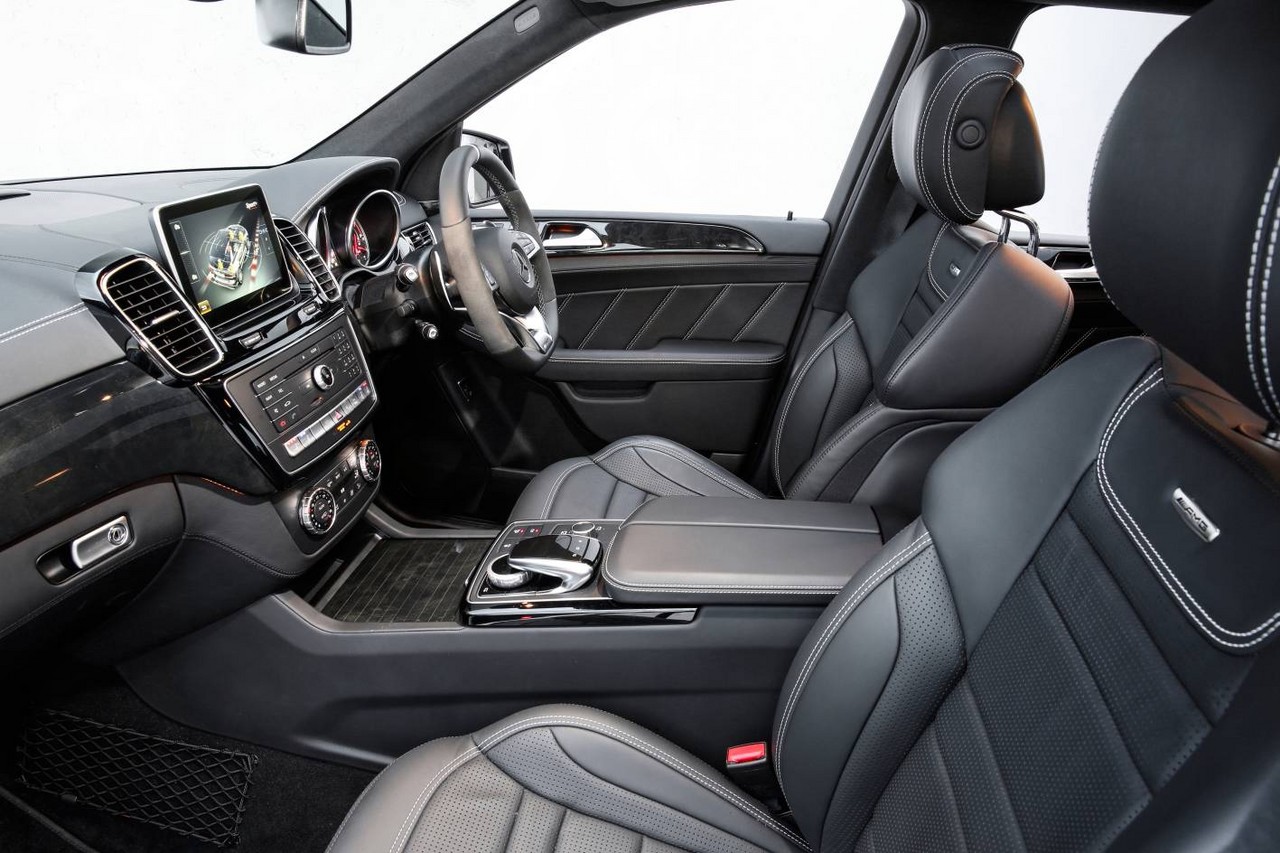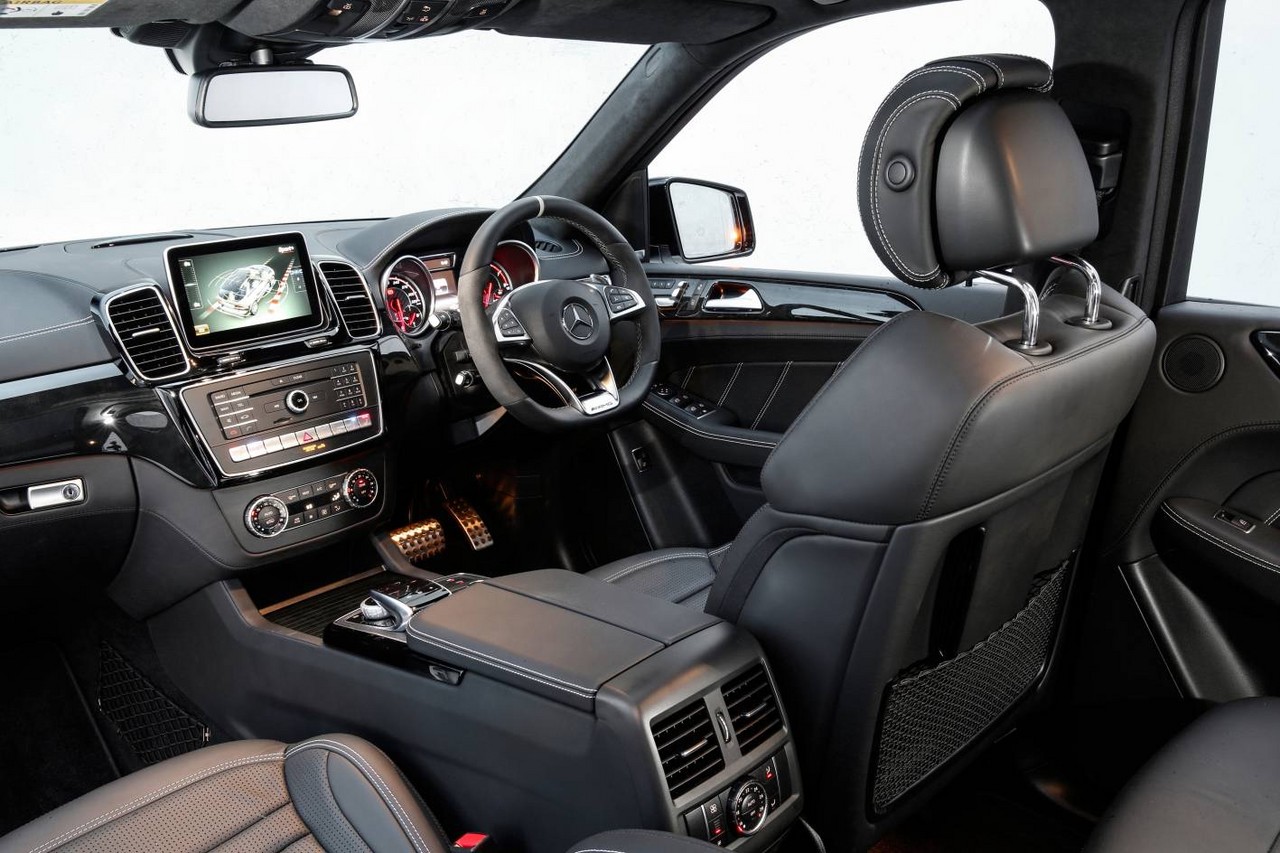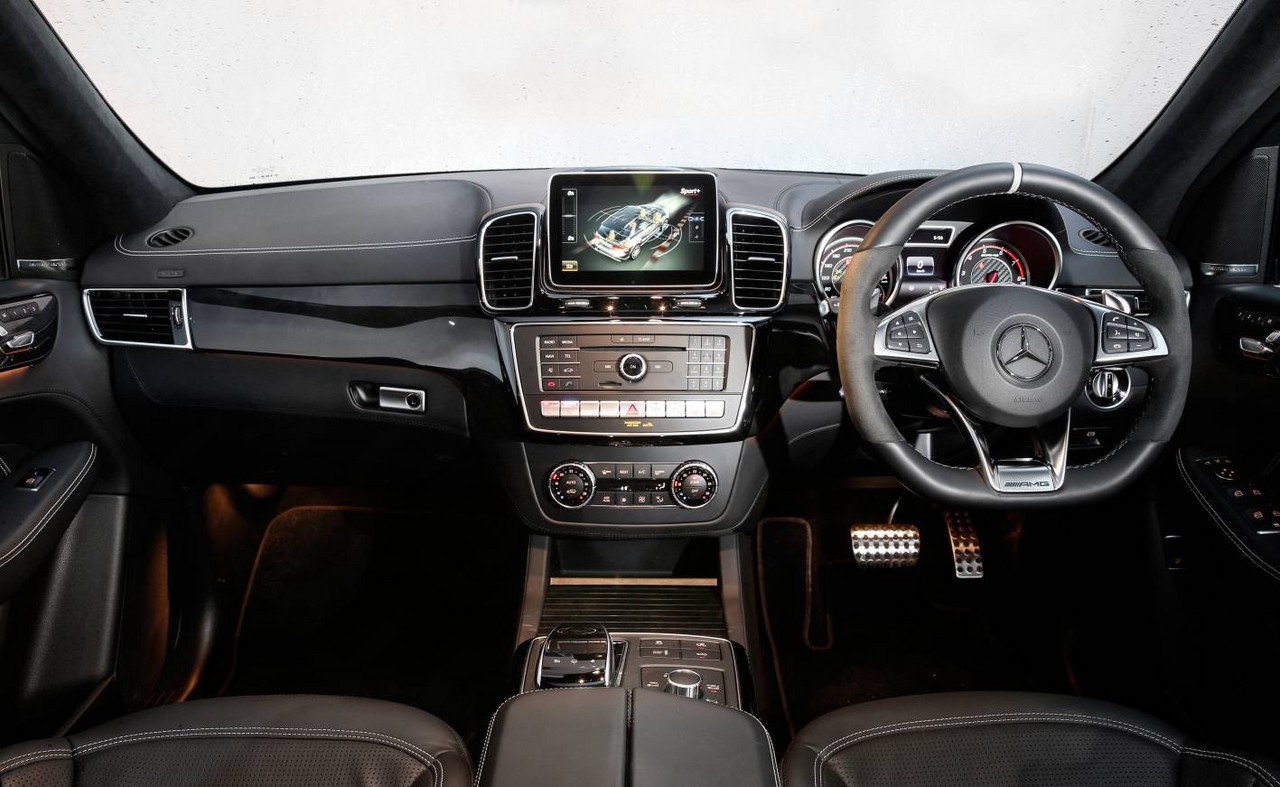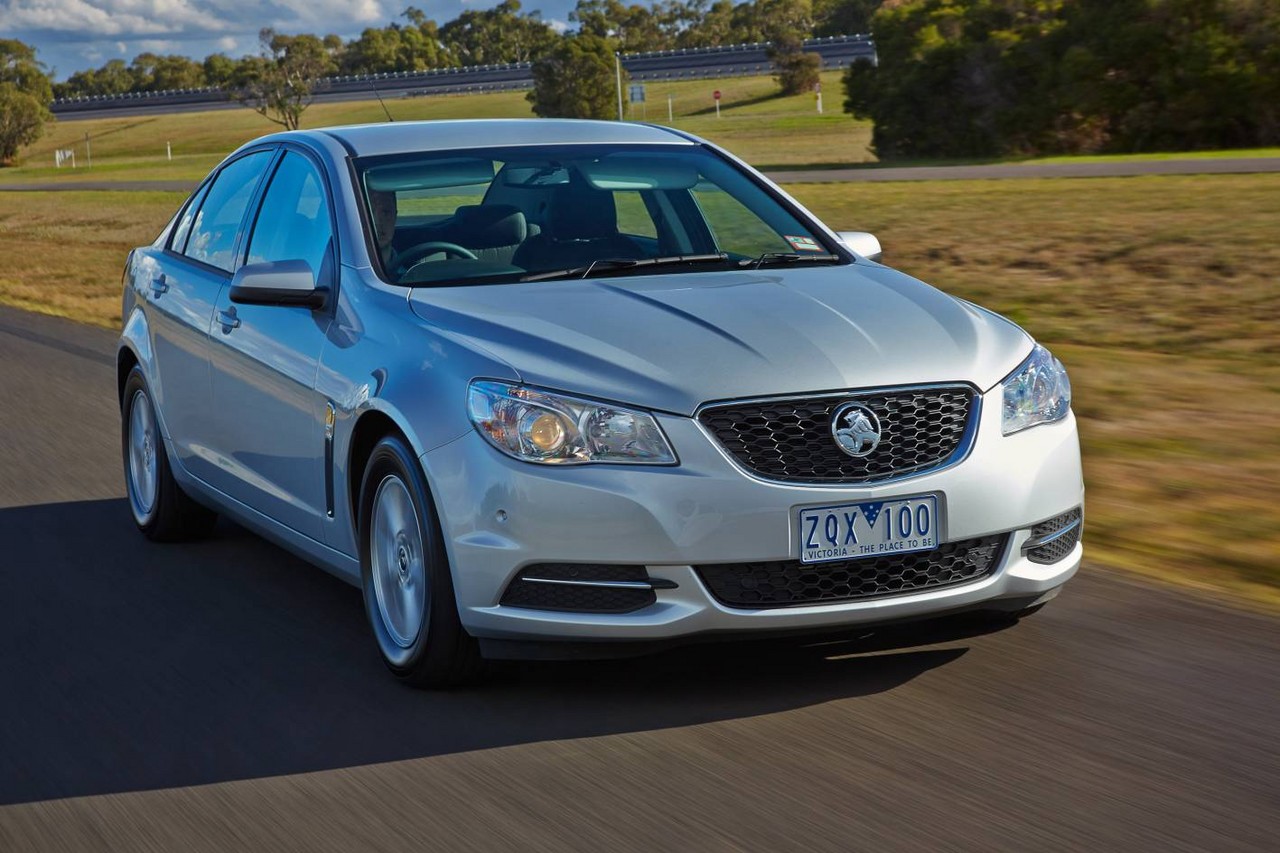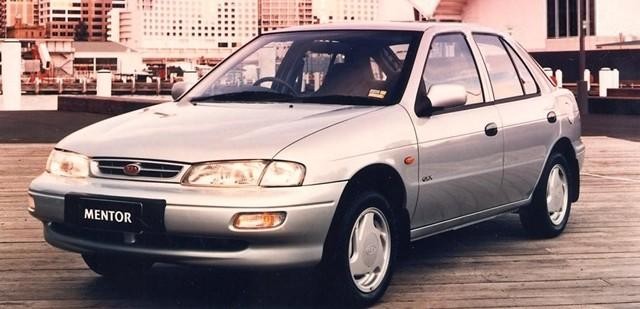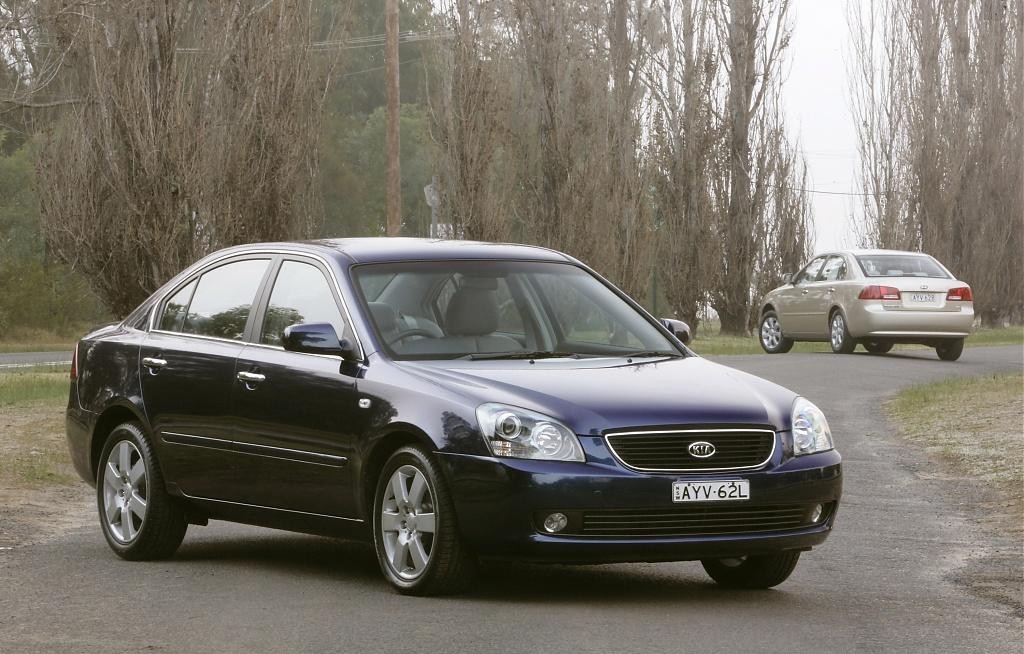
- For GLE 63 S, powerful 5.5-litre M157 biturbo V8 engine
- Impressive dynamics
- Spacious interior and cargo area
- Steering lacks feel
- Firm ride
- Firm seats
- High fuel consumption
Overview
The Mercedes-AMG W166 GLE was a large, four-wheel drive SUV. Released in Australia in June 2015, the W166 GLE range initially consisted of the GLE 63 W which was powered by a 5.5-litre biturbo V8 petrol engine that was mated to a seven-speed automatic transmission. In July 2016, however, the range was expanded with the GLE 43 which was powered by a 2996 cc biturbo V6 petrol engine that was mated to a nine-speed automatic transmission.
The W166 GLE 63 S replaced the Mercedes W166 ML 63 AMG as part of a change in naming convention. The Mercedes-AMG W166 GLE was manufactured in Tuscaloosa, Alabama.
W166 GLE 43: M276 biturbo V6 engine
The Mercedes-AMG GLE 43 was powered by the 2996 cc M276 V6 engine which had an aluminium alloy cylinder block with ‘Nanoslide’ coating for the cylinder liners, a forged steel crankshaft, an aluminium alloy cylinder head, chain-driven double overhead camshafts, independent intake and exhaust camshaft adjustment, four valves per cylinder, a variable-resonance intake manifold, direct injection via piezo injectors which provided injection pressure of up to 200 bar, and a compression ratio of 10.7:1.
To minimise fuel consumption, the M276 engine had:
- An ECO start/stop function that could shut down the engine when the E 43 was stationary in traffic; and,
- In ‘Eco’ mode, a coasting function that could disengage the clutch when driving at speeds between 60 km/h and 160 km/h to decouple the engine from the powertrain – this eliminated engine braking and electronics could reduce engine speed to idle level.
W166 GLE 63 S: M157 twin-turbo V8 engine
The 5461 cc M157 V8 engine had an aluminium block with Silitec cylinder liners, a forged steel crankshaft, fracture-split forged connecting rods, direct fuel injection via piezo injectors, an aluminium cylinder head, two Garrett MGT2260MSL turbochargers (one per cylinder bank) which provided peak boost pressure of 0.9 bar, an air/water intercooler, double overhead camshafts, four valves per cylinder and variable intake and exhaust valve timing.
| Engine | Trans. | Peak power | Peak torque | |
|---|---|---|---|---|
| GLE 43 | 2996 cc M276.821 biturbo petrol V6 | 9sp auto | 270 kW at 5500-6000 rpm | 520 Nm at 2000-4200 rpm |
| GLE 63 S | 5461 cc M157.9821 biturbo petrol V8 | 7sp auto | 430 kW at 5500 rpm | 760 Nm at 1750-5250 rpm |
GLE 43: 4MATIC all-wheel drive system and 9G-Tronic transmission
For the Mercedes-AMG GLE 43, AustralianCar.Reviews understands that the ‘4MATIC’ all-wheel drive system utilised a centre planetary differential and multiple-disc clutch, with the single-stage transfer case flange-mounted on the nine-speed ‘9G Tronic’ automatic transmission. In normal conditions, the 4MATIC system provided a 31:69 front:rear torque split.
For the GLE 43, the driver could select from Eco, Comfort, Sport, Sport Plus and Manual modes for different transmission gearshift mapping and shift speeds. In ‘Eco’ mode, the clutch could disengage to decouple the engine from the powertrain when the driver released the accelerator and the GLE 43 was travelling between 60 km/h and 160 km/h; when this occurred, engine speed was reduced to idle and the driving resistance was reduced by the compression and frictional forces of the engine in over-run mode.
GLE 63 S: 4MATIC all-wheel drive and AMG Speedshift Plus 7G-Tronic
The Mercedes-AMG GLE 63 had a full-time four-wheel drive system (‘4MATIC’) with three open differentials. In normal conditions, the system provided a 40:60 front:rear torque split. Furthermore, the adaptable traction control system (‘4ETS’) can brake any wheel that is about to lose traction to transfer torque to the wheels with grip.
Features of the 4MATIC system included:
- Downhill Speed Regulation (DSR): designed for steep downhill gradients and activated by pushing a button in the centre console. With DSR, vehicle speed would be kept constant by engine and transmission control, and automatic braking. While the system would initially set a speed of 6 km/h, the driver could use the cruise control stalk to set the desired downhill speed between 4 km/h (minimum) and 18 km/h (maximum); and,
- Start-Off Assist: helped the vehicle more safely accelerate from rest when on steep uphill gradients, by preventing the vehicle from rolling backwards as the driver moved their foot from the brake pedal to the accelerator. During this period, brake pressure would be provided by an ‘actively controllable’ brake servo unit. Start-Off Assist was automatically activated by an inclination sensor.
For the GLE 63 S, the seven-speed AMG Speedshift Plus 7G-Tronic transmission enabled the driver to select from three modes:
- ‘Controlled Efficiency’, ‘C’, for softer throttle response, smooth gearshifts, acceleration from rest in second gear (generally), early upshifts and activation of the ECO start/stop to reduce fuel consumption;
- ‘Sport’, ‘S’, for greater throttle response, gear changes at higher engine speeds, faster gearshifts, disabled the ECO start/stop function, activated a double declutching function when downshifting and, for faster gearshifts under full loads, enabled the engine to partially suppress ignition and injection in individual cylinders; and,
- ‘Manual’, ‘M’, for gear shifting solely via the steering wheel gearshift paddles.
Gear ratios for the AMG Speedshift Plus 7G-Tronic were 4.38 (1st), 2.86 (2nd), 1.92 (3rd), 1.37 (4th), 1.00 (5th), 0.82 (6th) and 0.73 (7th); the final drive ratio was 3.47.
Body and dimensions
The Mercedes-AMG W166 GLE 43 was 4824 mm long, 1935 mm wide, 1743 mm tall and had a 2915 mm long wheelbase, while ground clearance was 182 mm. The W166 GLE 63 S, however, was 29 mm longer (at 4853 mm), 30 mm wider (1965 mm) and 22 mm taller (1765 mm), while its ground clearance was 44 mm less (138 mm).
Compared to the Mercedes-Benz W166 ML 63 AMG , changes for the Mercedes-AMG W166 GLE 63 S included:
- A revised chassis for improved driving dynamics and agility;
- Greater throttle response and faster gearshifts;
- A new transfer case (see ‘4WD system’); and,
- Visual cues such as an ‘A-wing’ in the front bumper and double louvre chrome radiator grille.
Suspension: Airmatic, Adaptive Damping System and Active Curve System
The W166 GLE 43 and GLE 63 S had double wishbone front suspension and independent, multi-link rear suspension. Like the Mercedes-Benz W166 GLE 500 , the GLE 43 and GLE 63 S were fitted with Mercedes-Benz’s ‘Airmatic’ air suspension with Adaptive Damping System (ADS) which consisted of:
- Air-filled spring struts on the front axle with integral ADS dampers;
- Air springs with separate ADS dampers on the rear axle;
- Electric compressor with central pressure reservoir and pressure sensor;
- Air spring valves;
- Sensors for level control and damping control; and,
- An electronic control unit.
For the GLE 63 S, changes included AMG-specific air spring struts, AMG-specific elastokinematics for the front axle and a more robust stabiliser bar for the rear axle.
Airmatic air suspension could compensate for variations in vehicle load and driving state, while also acting as a level control system. For speeds above 70 km/h or when the ‘Sport plus’ mode was engaged, the air suspension would lower the body by 10 mm to reduce drag and increase stability. For off-road use, the air springs could increase ground clearance by up to 60 mm.
ADS was a fully automatic, electronically-controlled system which adapted the damping force at each wheel according to the road and driver behavior to reduce the forces exerted on the body by the movement of the wheels; the driver could also select from ‘Comfort’, ‘Sport’ and ‘Sport plus’ modes. ADS had four maps which it could use based on steering angle, turning angle sensors, vehicle speed and braking application:
- Level 1: soft rebound and soft compression for comfortable ride characteristics, suitable for little longitudinal and lateral acceleration;
- Level 2: soft rebound and firm compression (skyhook mode);
- Level 3: firm rebound and soft compression (skyhook mode);
- Level 4: firm rebound and firm compression, for minimising wheel load fluctuations when cornering and braking for more secure handling.
While Level 1 would be used for low levels of body movement, greater movement would result in the skyhook algorithm alternating between Levels 2 and 3 – by activating the fast-acting solenoid valves – to counter body roll and pitch. In more ‘dynamic’ handling conditions or when the ‘Sport’ or ‘Sport plus’ suspension modes were engaged, Level 4 would be used.
Also fitted as standard, the Active Curve System used active anti-roll bars on the front and rear axles to control body roll according to lateral acceleration, road speed and the suspension mode selected. When driving straight ahead, rotary actuators would decouple the two halves of the front and rear anti-roll bars so that they were not active. When the active anti-roll bars were operating,
- A hydraulic pump would feed oil to the anti-roll bar circuits;
- The active anti-roll bars had internal hydraulic rotary actuators with six-oil filled chambers, three of which were pressured for each direction of travel (i.e. cornering left or right). Furthermore, the front valve block had the task of distributing the oil flow between the front and rear axles, regardless of load; and,
- Pressure control valves and directional control valves that were integrated into the valve blocks at the front and rear axles would set the desired pressure and twist the active anti-roll bars in the appropriate direction.
Steering
The Mercedes-AMG GLE 43 and GLE 63 S had electromechanical, rack-and-pinion steering. The level of power assistance varied with vehicle speed and the suspension mode selected.
Safety equipment
Standard safety equipment for the Mercedes-AMG GLE 43 and 63 S included dual front airbags, a driver’s knee airbag, front and rear side airbags, full-length curtain airbags, ABS, electronic brake force distribution, brake assist, electronic stability control, traction control, active front seat head restraints, and front seatbelts with pre-tensioners and load limiters.
Standard active safety technologies for the Mercedes-AMG GLE 43 and GLE 63 S included:
- Mercedes-Benz’s ‘Pre-Safe’: if a collision was anticipated, Pre-Safe initiated automatic tensioning of the front occupants’ seatbelts, closure of the windows and sunroof and adjusted the position of the front passenger seat (if the memory package was fitted) to enhance occupant protection;
- Pre-Safe Brake with pedestrian detection (autonomous emergency braking): using two 24 GHz sensors behind the front bumper which had a range of 30 metres and a 77 GHz radar which had a range of 200 metres, Pre-Safe Brake operated at speeds between 30 km/h and 200 km/h, and at speeds below 70 km/h if the vehicle was approaching a stationary queue of traffic. Around 2.6 seconds before the anticipated moment of impact, an audible warning would sound and a red warning would appear in the tachometer. Around 1.6 before the calculated impact, the first stage of Pre-Safe Brake would initiate partial braking autonomously with around 40 per cent of the maximum braking power (approximately four (4) m/s2); the Pre-Safe occupant protections system would also be activated. If the driver then applied the brakes, maximum braking force would be made available. If the driver failed to react, Pre-Safe Brake would – in its second stage – initiate autonomous emergency braking (i.e. maximum braking power) around 0.6 seconds before the unavoidable collision to reduce the severity of the impact. The pedestrian recognition function enabled Pre-Safe Brake to detect pedestrians when driving at speeds of up to 50 km/h;
- Pre-Safe Plus: could anticipate rear-end collisions and warn following traffic by activating the rear hazard lights at high frequency. The Pre-Safe system would then deploy occupant protection measures and, post-collision, apply the vehicle’s brakes to prevent secondary accidents;
- Collision Prevention Assist Plus (radar-based collision warning with autonomous braking and adaptive Brake Assist): operating at speeds up to 250 km/h to monitor the traffic ahead and at speeds up to 50 km/h for stationary objects, Collision Prevention Assist would issue a visual warning (when driving at speeds over 7 km/h) and an optical warning (when driving at speeds over 30 km/h if there was a collision risk. At speeds below 105 km/h (250 km/h in conjunction with Distronic Plus), Collision Prevention Assist Plus would initially provide partial autonomous braking to reduce vehicle speed and alert the driver. Furthermore, adaptive Brake Assist would calculate the braking force required and prime the braking system for optimum response when the driver depressed the brake pedal. If the driver did not respond and a collision was unavoidable, then maximum braking force would be applied to reduce vehicle speed. At initial vehicle speeds of up to 40 km/h, rear-end collisions could be prevented;
- BAS Plus with Cross-Traffic Assist: used a 24 GHz radar sensor with a range of 30 metres and a 77 GHz radar sensor with a range of 200 metres to monitor the distance to the vehicle ahead and would warn the driver if there was a risk of a collision. Brake Assist Plus could detect vehicles when travelling at speeds up to 200 km/h, and stationary objects when the driver was travelling at 7 km/h to 72 km/h. Significantly, Brake Assist Plus could calculate the necessary brake force assistance to prevent a rear-end collision, build up that pressure in the braking system and provide it as soon as the brake pedal was depressed for ‘the best possible deceleration’. The Cross-Traffic Assist function could operate at speeds up to 72 km/h and used the stereo camera and radar sensors to detect traffic that was crossing in front of or behind the vehicle. If detected, the driver would receive visual and audible alerts;
- Distronic Plus (adaptive cruise control with brake warning): an ‘adaptive’ cruise control system which used two short-range radar sensors positioned behind the front bumper to monitor the road up to 30 metres ahead, and a long-range radar located behind the radiator grille which had a range of 200 metres. Operating at speeds up to 200 km/h, Distronic Plus used an electronic control unit to analyse the information from both radar systems to calculate the engine, automatic transmission and braking parameters required for proximity control. As such, Distronic Plus could automatically apply the brakes to prevent the vehicle from becoming too close to traffic ahead (the time interval could be specified) and accelerate back to the set speed when traffic allowed. To accelerate from rest, the driver only needed to operate the Distronic stalk on the steering column or briefly depress the accelerator pedal. With Distronic Plus, automatic deceleration of up to four (4) m/s2was possible. If Distronic Plus detected that heavier braking was required, a warning light would illuminate in the instrument cluster and be accompanied by an audible warning. Furthermore, the electronic proximity control system could be activated independently of Distronic Plus at speeds over 30 km/h to alert the driver if they were approaching another vehicle too rapidly;
- Steering Assist with Stop&Go Pilot: operating in conjunction with Distronic Plus and at speeds up to 130 km/h, Steering Assist used a stereo camera located behind the windscreen to detect road markings, while the Stop&Go Pilot operated at speeds up to 60 km/h and enabled the system to use the vehicle in front or road markings as a means of orientation. If the vehicle was detected to be drifting out of its lane, Steering Assist would warn the driver and provide steering intervention to keep the vehicle in its lane;
- Active Blind Spot Assist: active at speeds above 60 km/h, a corrective braking force would be applied to the wheels on one side of the vehicle if the driver attempted to change lanes when a vehicle was detected in the driver’s blind spot;
- Active Lane Keeping Assist: would vibrate the steering wheel as the vehicle approached a continuous lane marking line and, if crossed, automatically brake wheels on one side of the vehicle to return the vehicle within the lane;
- Crosswind Assist: could detect sudden, strong gusts of wind and prevent the vehicle from drifting out of its lane via corrective braking forces on one side of the vehicle; and,
- Attention Assist with drowsiness detection: operated at speeds in excess of 80 km/h and assessed driver behaviour (including steering movements) for signs of drowsiness; if detected, the driver would be provided with visual and audible warnings.
Euro NCAP testing
In Euro NCAP testing , a Mercedes-Benz W166 ML 350 BlueTec received a five star safety rating which included a 96 per cent adult occupant protection rating and a 75 per cent child occupant protection rating. In the offset crash test, there was a slight risk of serious chest injury for the front occupants and a slight risk of serious leg injury for the front passenger. Maximum points were awarded in the side impact test and, in the more severe pole test, protection of the chest was assessed as adequate and all other body areas as good. Under ANCAP’s methodology , this testing resulted in a five star adult occupant protection rating with a score of 36.34 out of 37.
Features: Mercedes-AMG GLE 43
Standard features for the Mercedes-AMG GLE 43 included 21-inch AMG five-twin spoke alloy wheels with a bi-colour paint finish, Mercedes-Benz’s COMAND Online with a 20.3 cm TFT colour display, HDD navigation, a Harman Kardon Logic 7 surround sound system, a CD/DVD player, MP3/WMA/AAC compatibility, a digital radio tuner (DAB+), ‘Linguatronic’ voice control, Internet connectivity, Bluetooth mobile phone connectivity and audio streaming, SD/USB interface, dual-zone ‘Thermatic’ climate control air conditioning, black pearl nappa leather and black leather upholstery, power adjustable and ventilated ‘luxury’ front seats, cruise control, LED daytime running lights, front and rear parking sensors, a rear view camera and 360 degree surround camera system, a black leather-wrapped steering wheel with gearshift paddles, 1/3 to 2/3 split and folding rear seats, rear seat through-loading facility, remote central locking with proximity key (i.e. keyless entry), power windows, power adjustable mirrors with power folding function, a power adjustable steering wheel (for height and reach), memory settings (for the front seats, steering column and door mirrors), auto-dimming mirrors (driver’s side and interior rear view), ambient lighting, electric parking brake, rear sunblinds, three 12 volt power sockets, an electric parking brake, brushed stainless steel pedals, AMG floormats, rear privacy glass, a glass sunroof with tilt/slid function, aluminium roof rails, tyre pressure monitoring, instrument cluster with an 11.4 cm multifunction colour TFT display, a trip computer and immobiliser.
As standard, the Mercedes-AMG GLE 43 also featured:
- Active Parking Assist: could identify parallel and right angle parking spaces – at speeds of up to 35 km/h – and provide automated steering to manoeuvre the vehicle into the space;
LED Intelligent Light System: enabled the main LED beam to remain on since an area of that beam could be masked out to avoid dazzling traffic; - Adaptive Highbeam Assist Plus: automatically dipped the high beam headlights to avoid dazzling other drivers; and,
- An ‘Easy-Pack Tailgate’: provided power-operated opening and closing of the tailgate.
Features: Mercedes-AMG GLE 63 S
Compared to the Mercedes-AMG GLE 43, the Mercedes-AMG GLE 63 S was differentiated by its 21-inch AMG cross-spoke alloy wheels with itanium grey finish, digital TV tuner, three-zone ‘Thermotronic’ climate control air conditioning, AMG Exlusive S Nappa leather upholstery, multi-contour front seats with heating and ventilation functions, a three-spoke steering wheel in black nappa leather and ‘Dinamica’ microfibre, a unique AMG instrument cluster, AMG sports pedals, illuminated front door sills, ‘Dinamica’ black microfibre headliner, panoramic glass sunroof and anti-theft package (including an alarm system, infra-red interior monitoring, tow-away protection and alarm siren).
Brochure
Specifications
- Specifications: Mercedes-Benz GLE-Class (October 2015)
- Specifications: Mercedes-Benz GLE-Class (June 2017)
Related links
- Daimler Media: Mercedes-AMG GLE 63 Premiere
- Mercedes-AMG: GLE 63
- Wikipedia.org: Mercedes-Benz W166 M-Class
